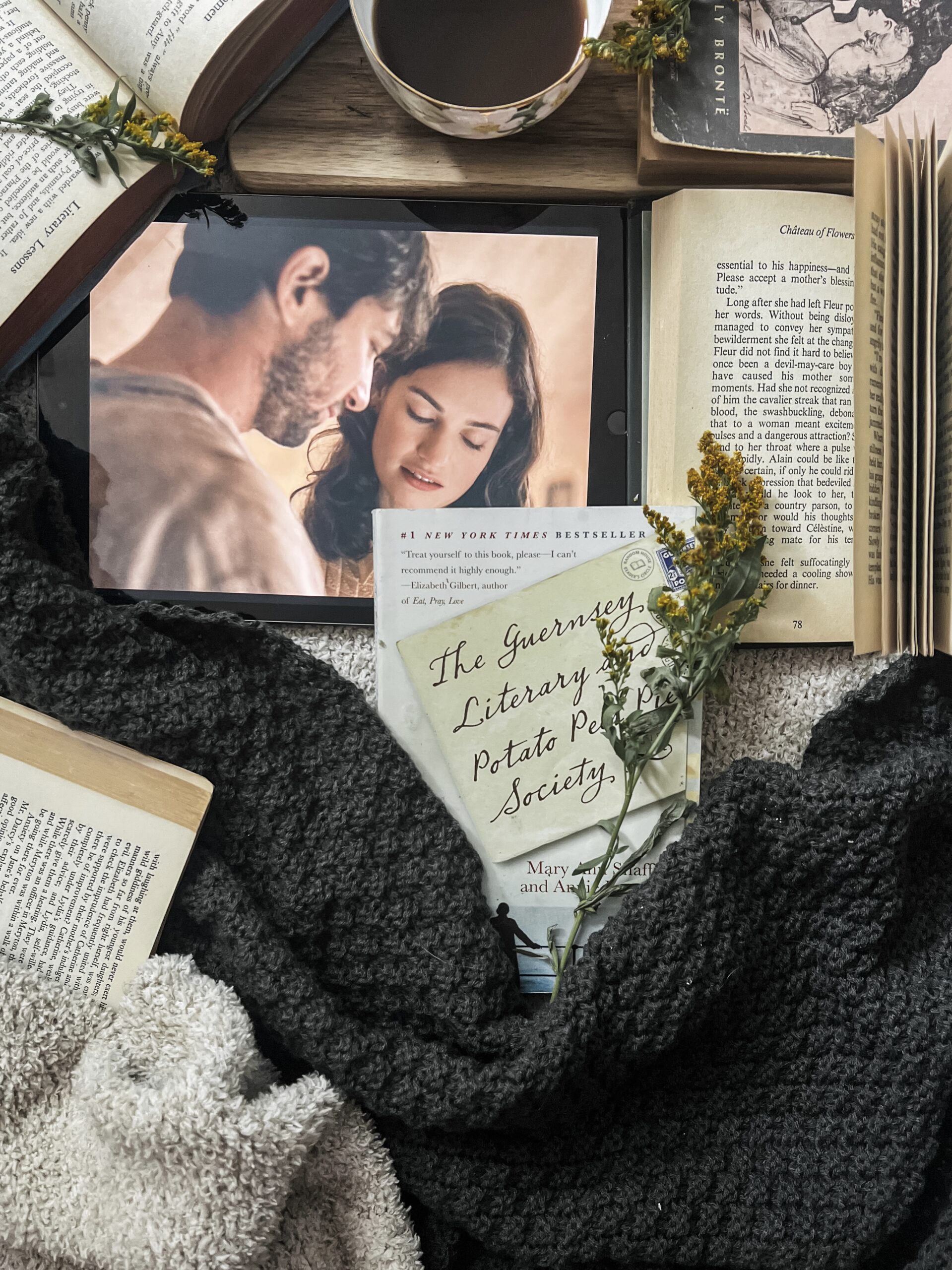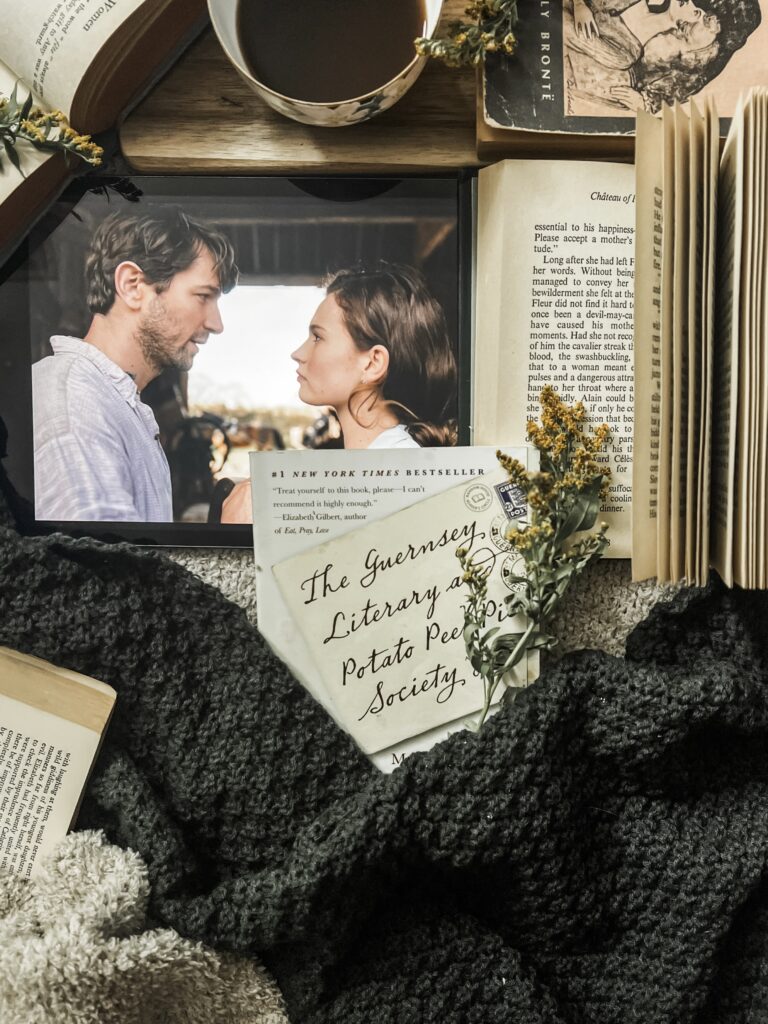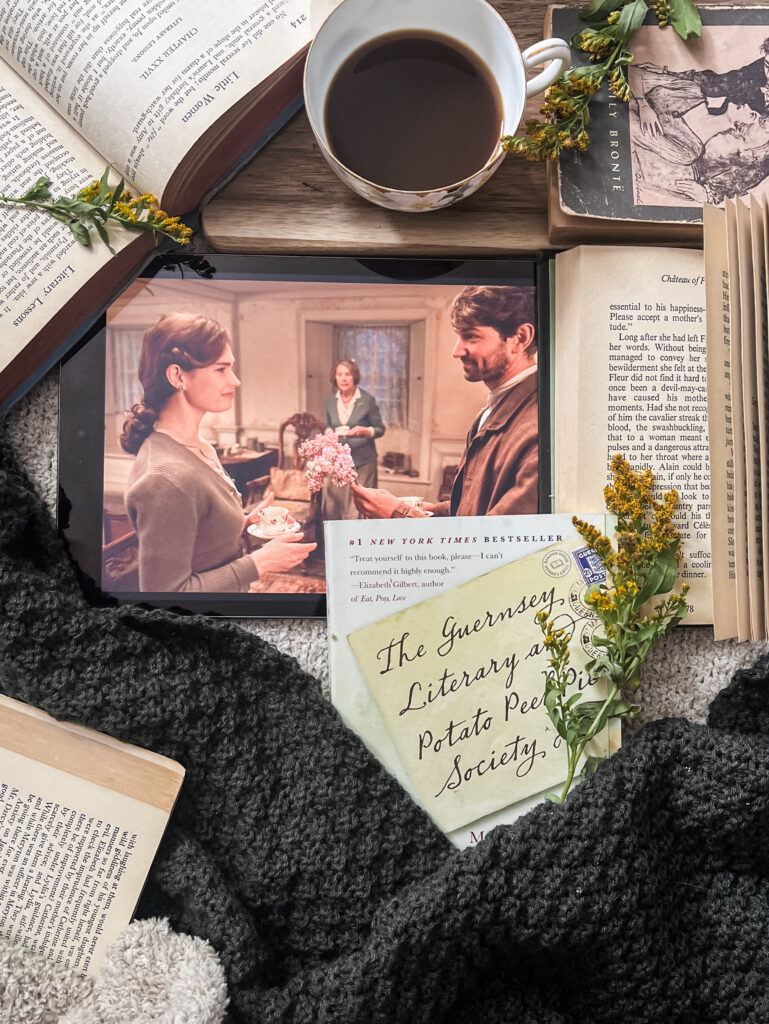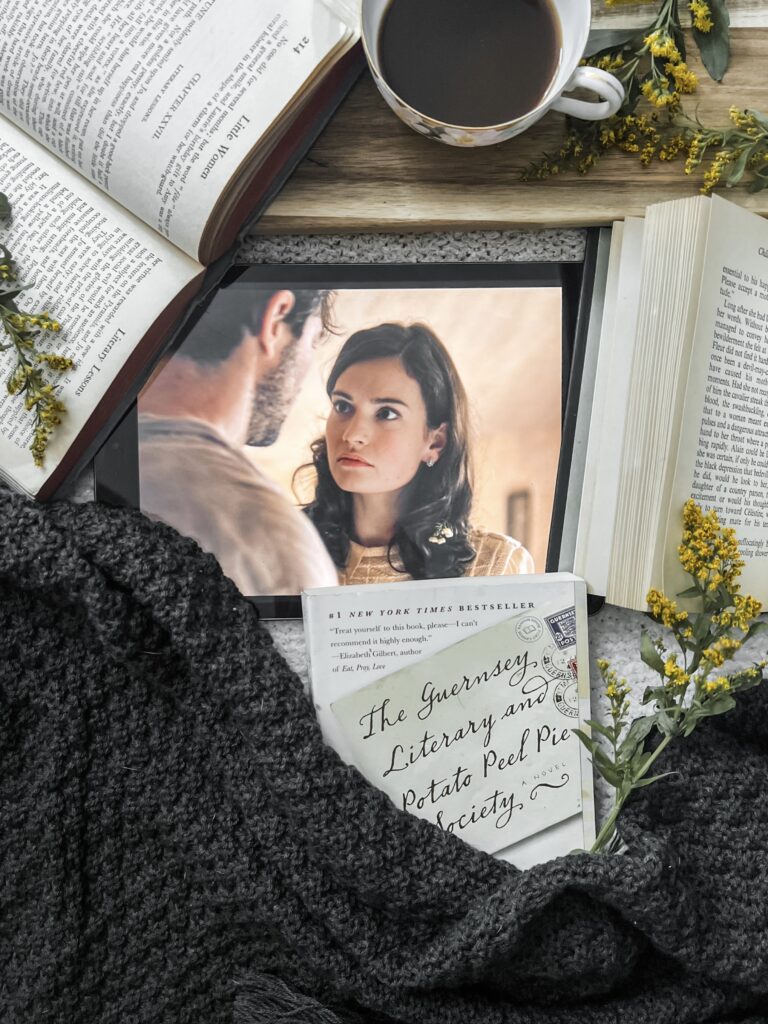
Wildflower Narrative: ‘The Guernsey Literary and Potato Peel Society’ Book vs. Movie
I was so excited to not only read ‘The Guernsey Literary and Potato Peel Pie Society’ but to first find it in my thrift store travels. I watched the film years ago, when it was released on Netflix. I noticed it was adapted from a book so, I made a mental note to one day read the book.
I fell hard in love with the movie, but that mental note got lost in copious mental notes. It has taken me years to get around to it, but alas, I have finally found and read ‘The Guernsey Literary and Potato Peel Pie Society.’ I cannot wait to share my thoughts on the book vs. movie below.
I absolutely adore how the film brings the story to life, especially with its creative use of flowers — but let’s get right back to that in a moment…
This post could contain affiliate links, which means I would receive a small commission at no cost to you should you shop using the links.
‘The Guernsey Literary and Potato Peel Society’ SYNOPSIS (& SPOILERS)
Juliet Ashton, a charismatic London writer, is on the hunt for her next book idea with her long-time pal and publicist, Sydney, right by her side. It’s 1946, post-WWII when Juliet learns about a book club in Guernsey, a small island still brushing off the dust, damage, and heartbreak of the German occupation.
She delves into each of their stories of war, resilience, and their connection to the book club’s forming member, Elizabeth. In Guernsey, Juliet finds more than just a book in the making—she discovers love, friendship, and a true sense of belonging.
Do you suppose it’s possible for us to already belong to someone before we’ve met them?
Juliet Ashton, The Guernsey Literary and Potato Peel Pie Society
After exchanging many letters with each member of said book club, Juliet packs her bags and heads to Guernsey in hopes she has found the next topic and inspiration for a new book. Juliet immediately feels a sense of home in Guernsey. She’s quickly woven into the fabric of the island, connecting deeply with its residents, especially the enchanting pig farmer, Dawsey Adams.
‘The Guernsey Literary and Potato Peel Society’ Book VS Movie
Perhaps the most glaringly obvious difference between the book and its film adaptation lies in the method of storytelling. The novel is entirely epistolary, meaning it’s composed of letters.
Most of the letters you’ll read are from Juliet or written to Juliet; however, you’ll find a letter from every character. Each letter adds a layer of detail, slowly unfolding the story and relationships.
Although Juliet receives word about The Guernsey Literary and Potato Peel Pie Society via letter (from Dawsey, of course) the film adaptation reimagines the story and nixes the letter-by-letter dialogue.
Honestly, thank goodness because watching that slow burn between Juliet and Dawsey from the very beginning is *chefs kiss!*
In the film, their connection is not just about shared interest via letters but is visually and emotionally charged right from their first meeting. There is so much uncertainty with Dawsey’s feelings toward Juliet in the book, but in the movie, it could not be more obvious he is completely in love with her and vice versa.
The film introduces new scenes not found in the book, such as Juliet trading her copy of Charles Lamb for money as opposed to wanting shelf space on her bookcase. Or how it is Juliet instead of Isla discovering her letters tucked inside Dawsey’s copy of Charles Lamb. Or how Dawsey thoughtfully picks wildflowers for Juliet.
With the use of flowers, the film adds a rich layer of symbolism that isn’t present in the book.
Floral Symbolism in Film
Flowers weave such meaningful symbolism throughout the film. The use of flowers is not just a romantic gesture (though they certainly are romantic at times) but serves as a profound symbol.
The expensive roses from Mark versus the simple hand-picked wildflowers from Dawsey reflect the nature of Juliet’s relationships and desires.
The wildflowers, which are more natural and unpretentious, could represent a genuine, heartfelt connection between Dawsey and Juliet, which aligns with the more authentic, simple life she yearns for, as opposed to the opulent but perhaps superficial life represented by Mark’s roses.
This idea of a simple, authentic life can be seen in Juliet’s housing choice. Juliet steps foot inside a flat for sale — pristine and adorned with crystals. Ultimately, she does not buy it.
I feel like a fraud here.
Juliet Ashton, The Guernsey Literary and Potato Peel Pie Society
Furthermore, Mark’s glamorous art deco diamond versus Dawsey’s simple wedding band parallels this motif.
From Opulence to Authenticity
These visual symbols showcase the characters’ internal states and choices, making Dawsey’s love for Juliet more explicit through these thoughtful, symbolic gestures.
It’s not just the act of Dawsey giving Juliet flowers, it’s the symbolism of the flowers in the film. Juliet is always surrounded by a literal garden of expensive roses and bouquets from Mark. Yet it’s the simplicity of the picked wildflowers from Dawsey that makes the biggest impact on Juliet.
When Mark brings Juliet back from Guernsey and she ends their engagement, she clears her room of the garden of expensive flowers, a gesture of shedding her old life. Amid her search for inspiration to write, Juliet discovers a simple wildflower, pressed in her notebook—a gift from Dawsey.
This small, preserved wildflower becomes the catalyst she needs, sparking her inspiration and giving her the final push to finish her writing.
Small Things, Significant Changes
This added moment in the film, where Juliet discovers her letters tucked away in Charles Lamb and Dawsey removes a wildflower from her hair, is my favorite moment in the film.
Dawsey barely speaks, yet his expressions, body language, and the tender way he touches Juliet’s hair convey volumes.
Such a small thing. Just a book. Yet it’s brought me all this way.
Juliet Ashton, The Guernsey Literary and Potato Peel Pie Society
It’s a delicate, intimate gesture that underscores the nature of their connection. Juliet’s line about the smallness of a book bringing her such a long way parallels the smallness of the wildflower yet its significant emotional impact.
This act by Dawsey, and the overall use of flowers in the film, reinforces the central theme that true connections are not made through grand gestures or material wealth but through the simple, quiet moments that resonate with our deepest selves.
Both the Charles Lamb book and the wildflower are seemingly minor but are catalysts for major changes in Juliet’s life. They symbolize the idea that small, simple things can hold immense meaning and power.





